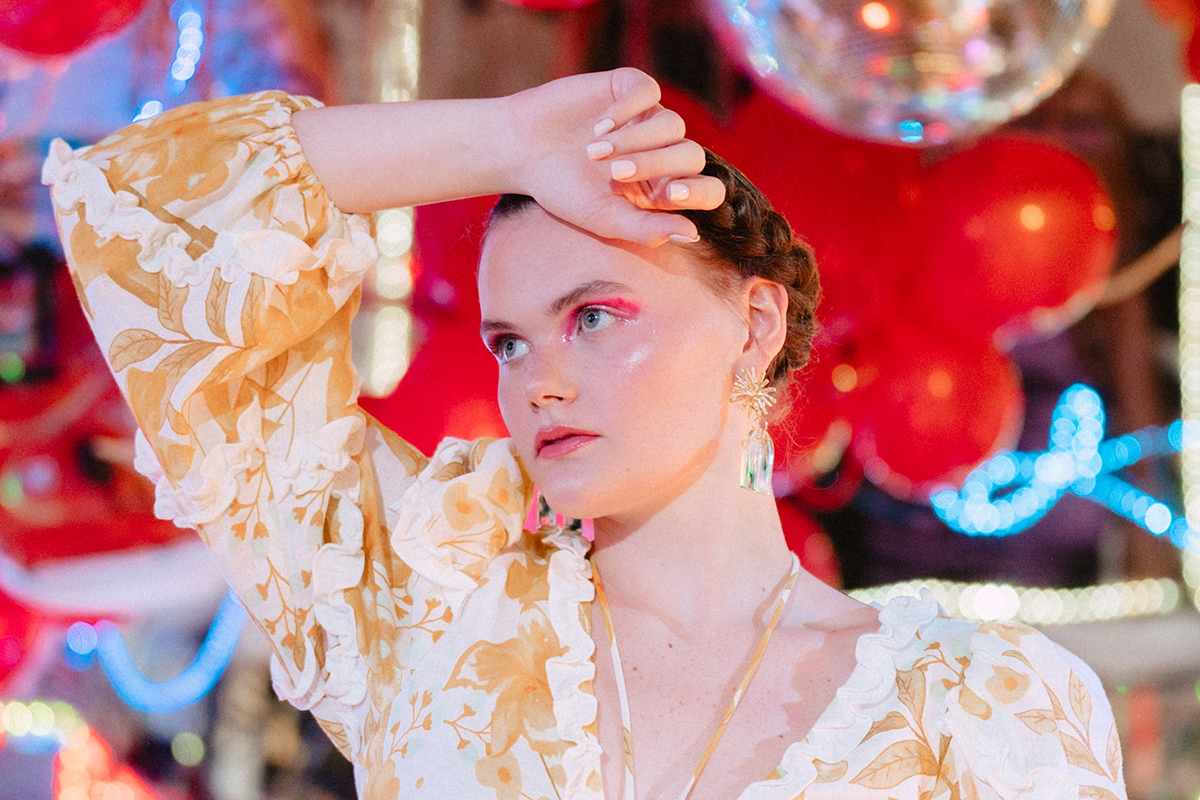He’s Got ‘The Look’
Michael Butler wins Memphis’ annual fashion photography competition with his Tamron 70-180mm F2.8 and 20-40mm F2.8 lenses.
Share the article:
More Photo Tips | Video Gallery | Photo Gallery | Enewsletter sign-up
By Jenn Gidman
Images by Michael Butler
Each year in Memphis, “The Look” competition kicks off as part of the city’s Fashion Week, inviting fashion photographers, designers, and models to submit their portfolios. Last year’s photography winner: local Michael Butler, who paired up with a young model to create a series of portraits taken around town. “This was my first time entering,” Michael says. “My wife encouraged me to go for it, so I’m grateful to her for that extra push. The model I photographed also was dubbed the winner in the model category.”
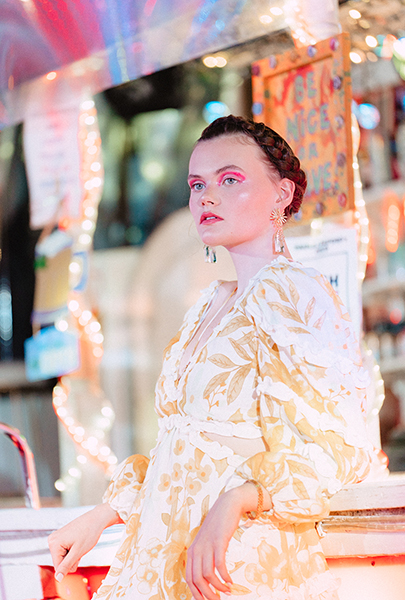
70-180mm (153mm), F2.8, 1/160 sec., ISO 1250
Click image to view larger
For the two shoots shown here, Michael used his Tamron 70-180mm F/2.8 Di III VXD telephoto zoom and 20-40mm F/2.8 Di III VXD zoom lens, both for his Sony mirrorless camera system. “I love the 70-180mm F2.8 because it’s so versatile, allowing me to take portraits and then zoom in for detail shots,” he says. “With a Minimum Object Distance (MOD) of 10.6 inches at the wide end, I can achieve amazing close-up photography, like if I wanted to focus on a piece of jewelry or a model’s eyelashes. I also appreciate the compression I can achieve with this lens, as well as its light weight. At less than 29 ounces, I can easily carry it around the whole day.”
Meanwhile, the 20-40mm F2.8 is the perfect everyday lens, in Michael’s view. “This lens is also super compact and lightweight at just 12.9 ounces, and it’s always on my camera,” he says. “I get a portrait lens and a walk-around lens all in one. I’m a 35mm guy, so it gives me that, plus a little more on either end.”
MICHAEL’S QUICK TIPS
Compress away.
The first part of my shoot took place in a ‘70s disco club here in Memphis, a lively, colorful venue that I knew would offer dynamic images. Because I was shooting with the close-focusing 70-180mm F2.8 telephoto lens, I was able to achieve a bit of compression. That proved incredibly helpful, because the club is really deep. I could make it appear as if that disco ball was right behind my model.

70-180mm (70mm), F2.8, 1/160 sec., ISO 1250
Click image to view larger
Bad lighting? No problem.
For the second part of the shoot, I wanted a contrast to the bright and airy disco, so we shifted to a stairwell, and I switched over to my 20-40mm F2.8 lens. This might seem like an odd location to shoot in, due to its poor overhead lighting, but that’s what made it ideal. I saw an opportunity to use that light, and any available shadow, to accentuate the model’s face and body as she posed.
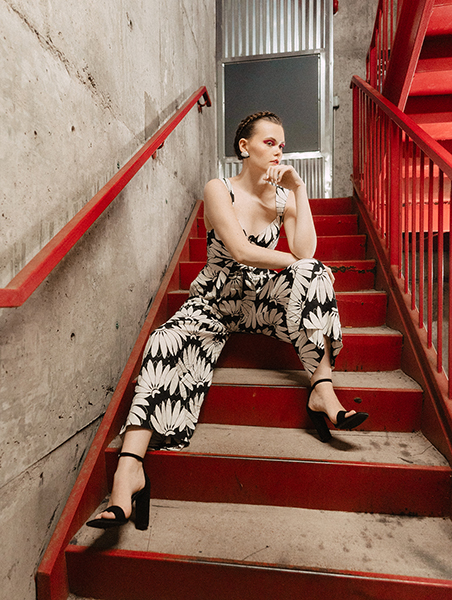
20-40mm (20mm), F2.8, 1/250 sec., ISO 2500
Click image to view larger
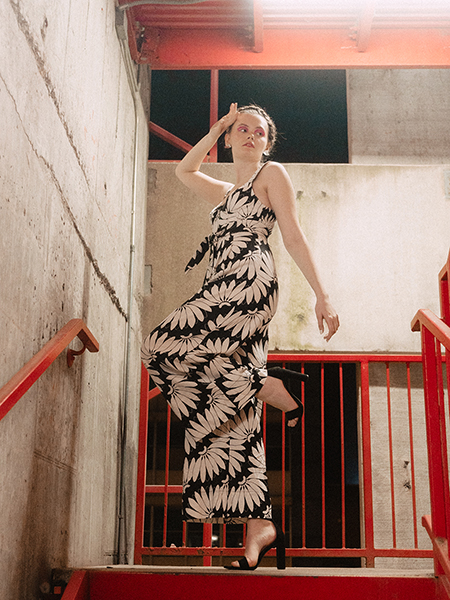
20-40mm (28mm), F2.8, 1/250 sec., ISO 2500
Click image to view larger
Shoot wide open.
I typically use all available light in my shoots. That’s why the 20-40mm and 70-180mm are desirable for my style of work. Shooting at that fast F2.8 aperture enables me to handle such challenging lighting situations, offers background blur so I can keep my model in focus while still offering environmental context, and also helps smooth over any blemishes on the model’s face.
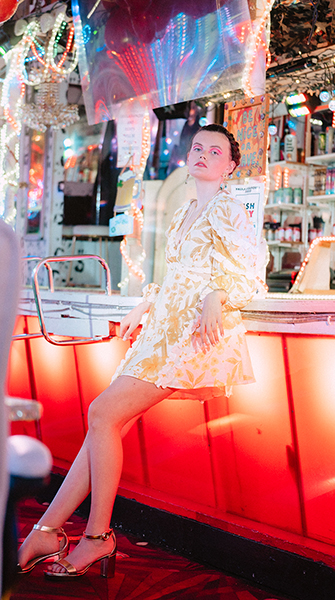
70-180mm (70mm), F2.8, 1/160 sec., ISO 1250
Click image to view larger
Compose with a narrative in mind.
I want my images to have a little more depth to them, both literally and metaphorically. That means I’m always seeking out a fresh perspective, or a different way to frame my shots, like shooting through the railing of the stairwell. I try to incorporate as much of the environment as possible into my photos. I don’t like to take a lot of tight headshots where you can’t see what’s happening in the background.
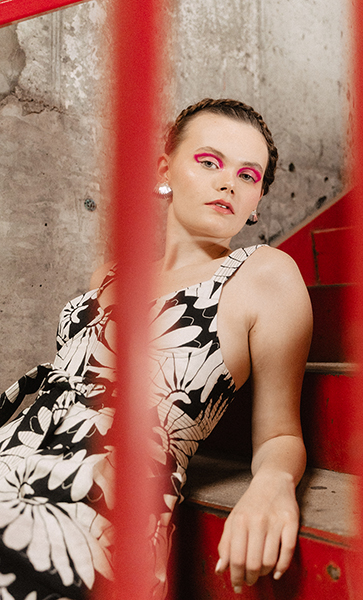
20-40mm (34mm), F2.8, 1/250 sec., ISO 2500
Click image to view larger
Help your models feel at ease.
You won’t capture authentic-looking photos if your model is uncomfortable. The model who took part in this session was only 16, and she’d just signed with a modeling agency. So this shoot was a big deal for her—her parents were there, her agent and manager, some friends, and me and my crew, as well as my wife. She was nervous when we first started, second-guessing herself and constantly looking over to her team. That’s when I asked her if she’d prefer if I cleared the room. She said yes, and I also got the OK from her mom and dad. From that point on, she started killing it.
I’m also not shy about showing my models how to pose (I’ve practiced a lot of the main moves myself). Or I’ll bring a monitor, iPad, or even a large mirror to my portrait sessions, which I’ll place behind me so the model can see what she looks like as she tries out different poses. And I always encourage my models to come in with confidence. Confidence is always beautiful.
To see more of Michael Butler’s work, check out his Instagram.
Is your Tamron News subscription up to date? Click to subscribe to all editions of Tamron News featuring how-to tips, new product news, contest announcements and inspiration!
More Photo Tips | Watch Videos | Learn More About Tamron Lenses | Photo Gallery
